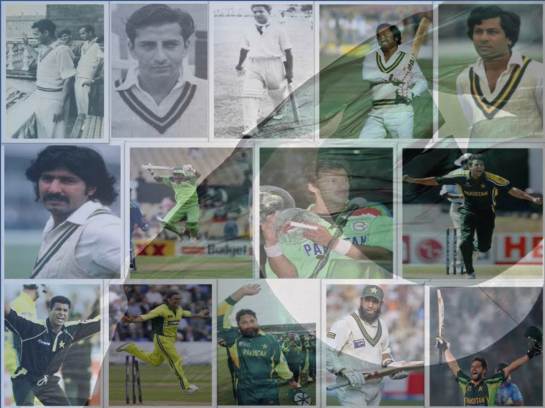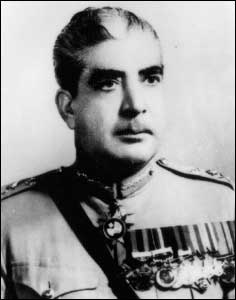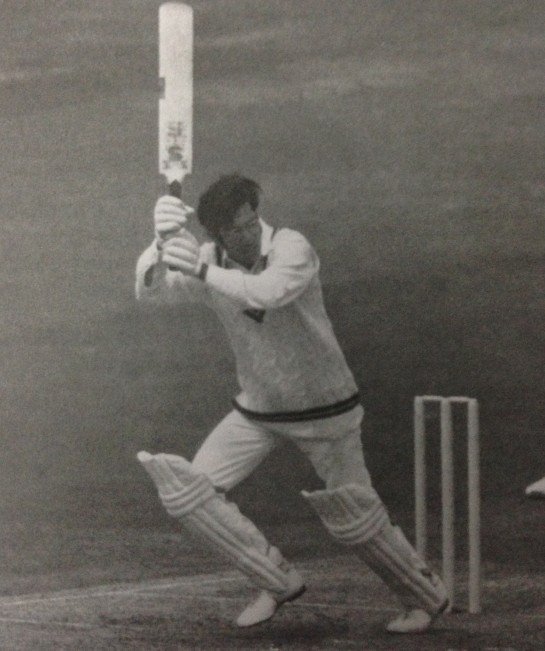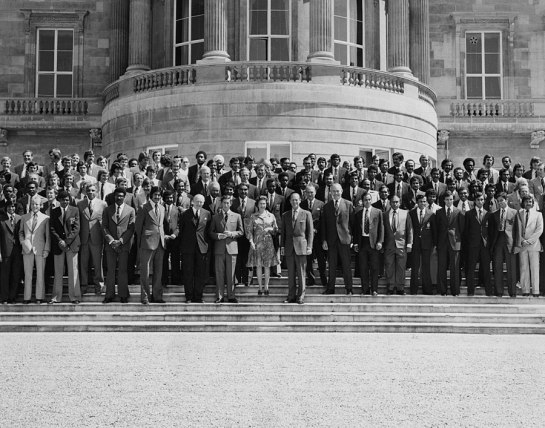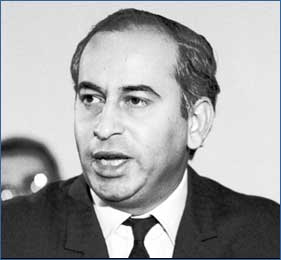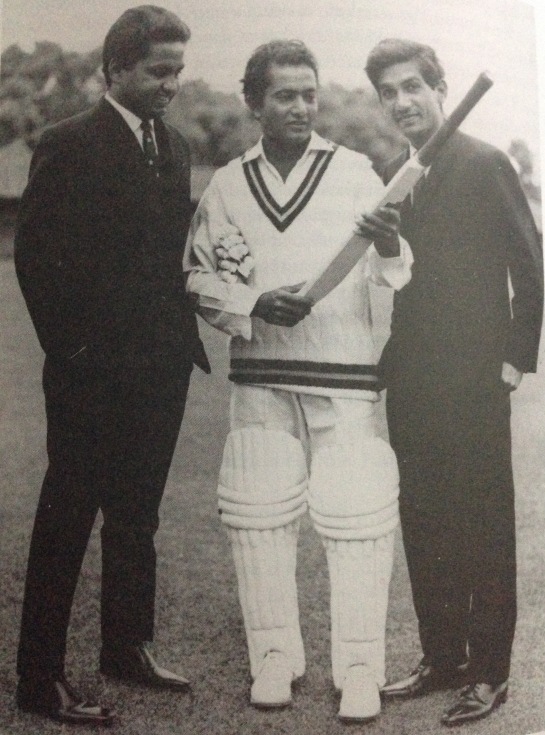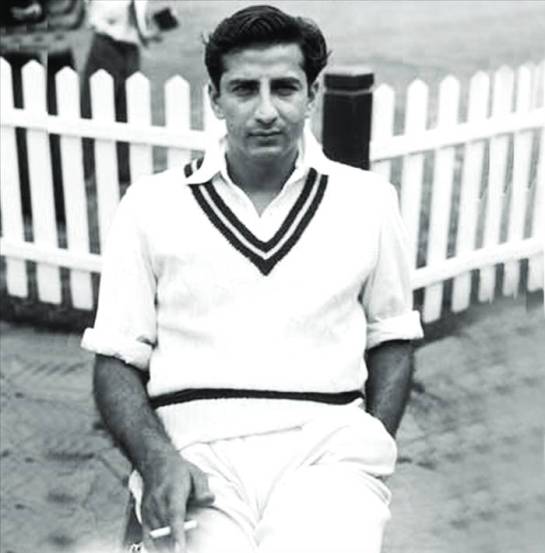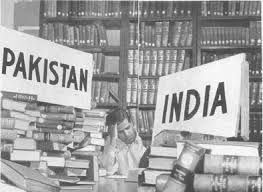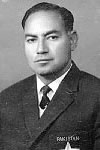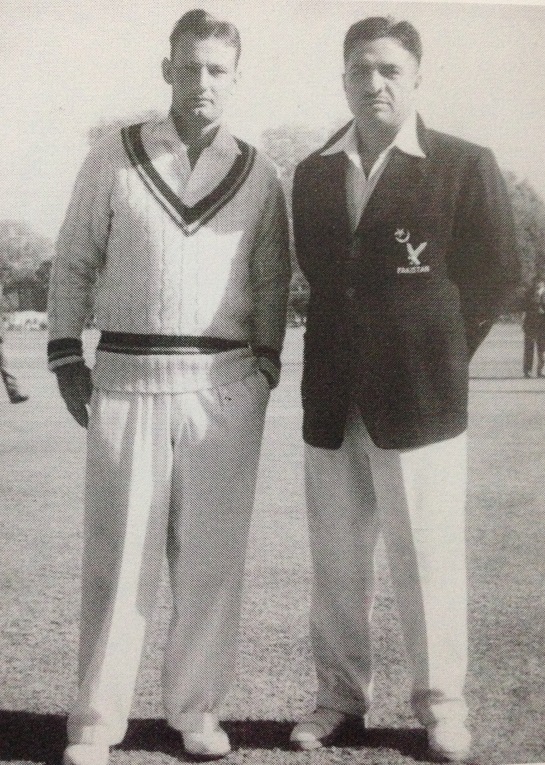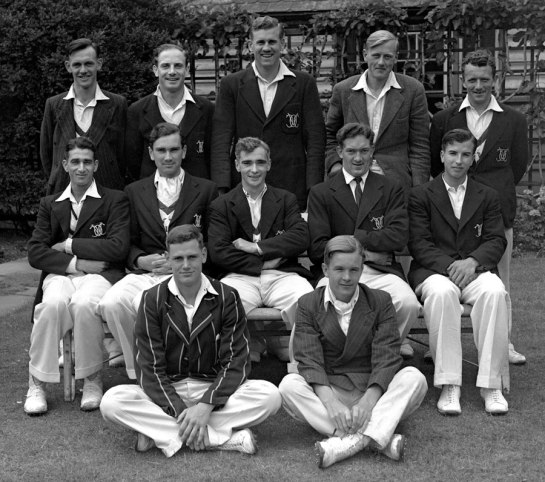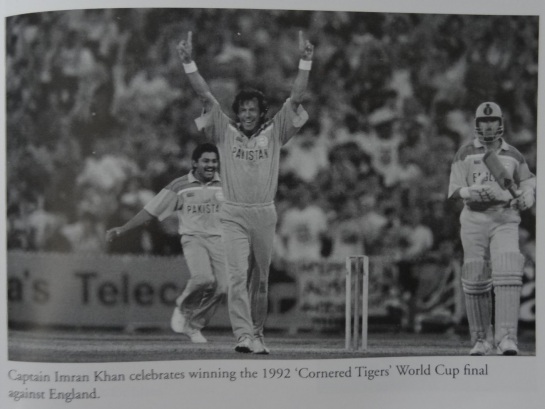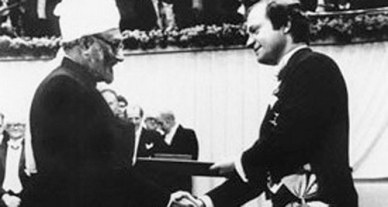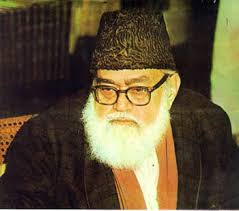Pakistan as a country has been through a number of highs and lows since traumatic partition in 1947 and its cricket has followed the similar pattern, showing how this sport is embedded in social, political and cultural facets of the country. Initially dispersed, unrecognised, underfunded and weak, Pakistan’s cricket team grew to become a major force in world cricket. If cricket is known for its glorious uncertainties, our team is even more notorious for its unpredictability. In this series of blogs we shall dig into social, political, cultural and sporting history of cricket in Pakistan.
Read previous parts here:
Part I – 1940s: Partition and Founding Stones of Cricket in Pakistan (1947 – 1950)
Part II – 1950s: Pakistan announces itself to cricket world (1951 – 1960)
Part III – 1960s: The Lost Decade (1961 – 1970)
Part IV – 1970s: Revival of Pakistan cricket (1971 – 1980)
Pakistan a nation was at its lowest ebb since gaining independence. The political turmoil continued to worsen after the general elections of 1970. All the prospects of political compromise remained poor as Sheikh Mujib remain adamant on his demand for near-total independence: East Pakistan would run all its affairs, including trade and defence, with the sole exception of foreign policy. Bhutto rejected these demands and Six-Point Charted of Awami League. General Yahya suspended the National Assembly in March 1971 with no dates for its restoration. Sheikh Mujib called for civil disobedience and Yahya announced him traitor and ordered Pakistan army to reconquer East Pakistan. East Pakistan fell into civil war.
Pakistan’s tour of England and disappearance of East from Pakistan
Pakistan’s tour of England in 1971, in doubt until the last moment because of the threat of demonstrations and the political situation in Pakistan, was an undoubted success from the playing point of view, even if the Test series was lost by a bare defeat with two matches drawn.
The tour saw the launching of a new batting star who would dominate the Pakistan cricket scene for many years. Zaheer Abbas was then a bespectacled gangly young man who resembled an absent-minded professor. In the first test match at Edgbaston he scored 274, an innings that had experts in rapture. Pakistan scored 608-7 in first innings and made England follow on for the first time against Pakistan. Pakistan ware on the edge of a famous victory, but rain and bad light interfered heavily with the last two days and match was abandoned with England five wickets down and 26 behind.
Pakistan lost the series narrowly losing at Leeds, after many twists and turns, by 24 runs but Pakistan had done enough to earn the respect of the cricket world. One other player made his test debut on this tour. A schoolboy called Imran Khan. He bowled fast with a slinging action, with control on neither length nor line. The potential was evident but no one could have foretold that he would one-day become the world’s most charismatic cricketer and who would turn around Pakistan cricket and make them world champions.
Pakistan team returned to a nation confronting mortal threat. As Indian forces gave first covert and then open support to Mukti Bahini guerrillas, Yahya Khan’s army began to lose control of East Pakistan. India declared war and its army marched into East Pakistan, where it overwhelmed the already exhausted Pakistan army in barely two weeks. On December 17, 1971, East Pakistan got separated from West Pakistan.
For the next 6 years the country and its cricket were to be run by men with powerful minds, strong personalities and a reform agenda at home and overseas, but also with a gift for making enemies: ZA Bhutto and his old friend and new political follower AH Kardar.

AH Kardar and ZA Bhutto discussing matters of state at Gaddafi stadium. (Source: ‘Wounded Tiger’ by Peter Oborne)
Kardar in power, Crash-bang ODI cricket and re-birth of Pakistan cricket
Pakistan became cricket’s pariah nation in 1960s. Just as Bhutto rebuilt the country’s international reputation in the 1970s, so Kardar restored Pakistan as a major Test-playing nation. Kardar used his period in charge of Pakistan cricket to galvanise decisive change. He was the first serious cricketer, the first to bring energy and vision to the post, the one of the few with irreproachable personal integrity.
The musical chairs of captaincy continued. In 1972-73 Pakistan toured Australia and New Zealand, losing to Ian Chappell’s Australia by the extravagant margins of 3 – 0 but winning the series against New Zealand. For his efforts, Inthikab Alam, the captain was removed and Majid Khan appointed in his place when Tony Lewis brought an England team. But when Pakistan toured England in 1974, Inthikab Alam was restored as captain. Although the test series was drawn, the team went through the tour undefeated and winning the prudential one-day series 2-0. No other team since Donald Bradman’s all conquering Australians in 1948 had achieved this.
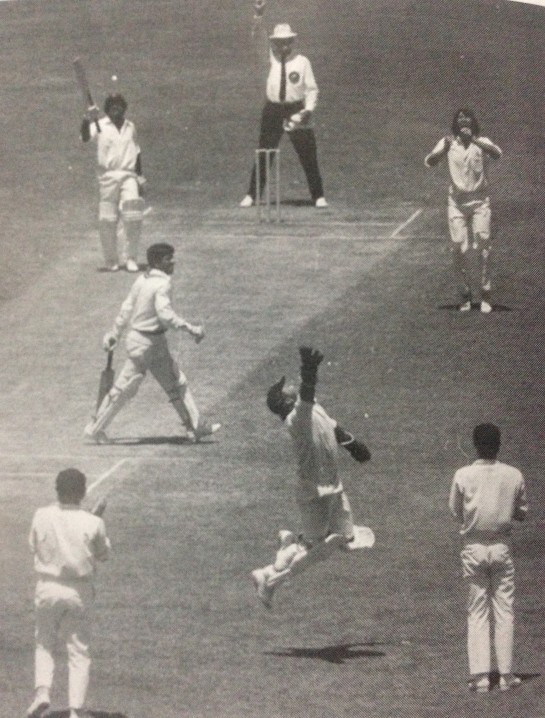
Majid Khan caught Marsh bowled Walker 158. Melbourne 1972. The not-out batsman is Mushtaq Muhammad. (Source: ‘Wounded Tiger’ by Peter Oborne.)

Sadiq Mohammad, Wasim Bari, Aftab Baloch, Zaheer Abbas, Asif Masood and Majid Khan on the 1974 tour of England. Masood, wearing the check trousers, has a bowling run-up that was compared by John Arlott to ‘Groucho Marx chasing a pretty waitress’. (Source: ‘Wounded Tiger’ by Peter Oborne.)
Cricket was changing. The one-day or limited overs cricket that had started as a sideshow was getting to be attractive but was still regarded as crash-bang cricket, a bit of a slog but it was beginning to attract crowds. The first World Cup was played in England in 1975 and Pakistan was captained by Asif Iqbal. The tournament turned out to be a disaster for Pakistan and it exited the tournament in anguish. The West Indies won the tournament in a canter.
Pakistan may have struggled on international stage but there was plenty of domestic cricket to console fans. Moreover, under Kardar the administrative structure of BCCP improved as well. His first priority was to give the Board a permanent headquarters and a well-staff secretariat, so the BCCP was moved to the newly built stadium in Lahore.
Kardar turned to Pakistan’s major banks and companies to finance Pakistan domestic cricket, built new stadium and facilities. He created new first-class and later one-day competitions. In 1974-75 Pakistan saw its first one-day competition, the Servis Cup, with 6 matches.
Kardar was the first Pakistani to play an active role at the International Cricket Conference (renamed from Imperial Cricket Conference in 1965).He brought a difference style as the time for snoring had ended and roaring had to start. He took bold steps. Idea of neutral umpires was first floated by him. Limiting bouncers in an over was also his idea. He was the first one to tackle issue of veto power of England and Australia, although it was removed in 1993. He also pushed for full membership of Sri Lanka.
Mushtaq the new captain, players’ revolt, emergence of Pakistan’s greatest batsman and end of Kardar’s era
Kardar’s ambitions suffered a blow after 1975 World Cup setback. He tried to resume cricketing relations with India but it came too soon after 1971 war, and Pakistan was left with an empty international timetable.
Gap was filled by tour of Sri Lanka which proved disastrous. Pakistan, led by Intikhab Alam, lost both ODIs where 2 test series was drawn 1-1. When New Zealand arrived in Pakistan in the autumn of 1976, he was replaced by Mushtaq Muhammad. This moved would be heavy with consequence.
Mushtaq immediately established himself as a more assertive kind of captain. He insisted on getting players he wanted and stood up for them in unimaginable ways. He has been many a time overlooked due to Pakistan’s subsequent achievements but he is one of greatest captains right along with Kardar and Imran.
When New Zealand came to Pakistan and a young Karachi lad made his test debut. His name was Javed Miandad. He announced his arrival by making 163 at Lahore on debut. He followed it up by making 206 at Karachi, the youngest player at age 19 years and 141 days to make the test double hundred. He was described as the batting find of the decade.
However, the series was overshadowed by the revolt of players led by Mushtaq Muhammad. The key demands of the players were the rise in allowances and match fee which had actually been reduced as compared to last home series against West Indies in 1974-75. Pakistan won the series but no bonus was announced by BCCP. During this period Kardar had also fallen out with Bhutto. His role in Pakistan cricket was nearly over. He was a man out of time. As a player and as an administrator, he had brought the national game he loved with such passion to hitherto unimaginable heights.
Pakistan takes on mighty Australians and West Indians
In controversial circumstances Mushtaq Muhamamd led Pakistani side to Australia in 1976-77. The most striking point was the balance between youth and age. Team had outstanding players of 60s – Majid Khan, Asif Iqbal, Wasim Bari, Zaheer Abbas and Sarfraz Nawaz who were joined by a new generation, of whom Javed Miandad and Imran Khan were soon to turn into giants.
The Pakistanis arrived with possibly the best batting combination in Test cricket, but by the time of their departure the team had in Imran Khan a fast bowler who had established himself as undoubtedly one of the finest in the world. Pakistan drew first test and lost second test badly. However the third test was a turning point.
As Sydney test, Imran unleashed a legendary spell of fast bowling. He had remodelled his action into something classical and fearless. He shot out 6 Australians supported by 3 wickets from Sarfraz. Pakistan were 111-4 when Asif Iqbal played an innings of his life making 120 runs, supported by debutant Haroon Rashid’s 57 and Miandad’s 64. With a lead of 140 Imran took a further 6 wickets to win the match.

A 19-year-old Javed Miandad gives a 23-year-old Imran Khan a shoulder massage during Pakistan’s Test match against Australia in Sydney in December 1976.
After proving themselves equal to challenge in Australia, Pakistan want to West Indies after 18 years which proved to an interesting series between two evenly matched teams. Each of the five Tests had its particular merit, the West Indies comfortably winning the last to secure a narrow two-one advantage in the rubber. Pakistan’s outstanding performers were the batsmen Majid Khan and Wasim Raja and the fast-medium bowlers, Imran Khan and Sarfraz Nawaz.
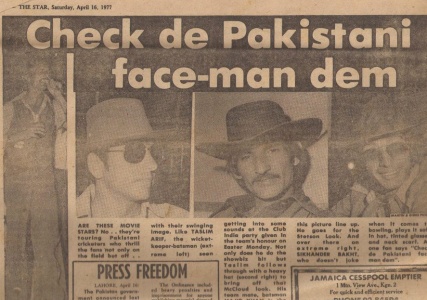
A WI feature on Pakistan team’s visit to a WI nightclub during the 1977 Pak-WI tour. Seen from left: Reserve wicketkeeper, Taslim Arif, Stylish Pakistani opener, Majid Khan and Pakistan fast bowler, Sikandar Bakht.
Of huge imprortance for the future, their overseas victories in Australia and West Indies were watched by viewers in Pakistan for the first time, through state television. Although most of this team had been at odds with Kardar, and ultimately driven him from office, the status they had earned for Pakistan cricket must have given him satisfaction. It was left to his successor to deal with Kerry Packer.
Coup d’etat, The Packer revolution and cricket resumes with India
Two grave crises faced Pakistan cricket. On July 5, 1977 General Zia, Chief of general staff, declared martial law, ordering arrest of Bhutto and his cabinet and promised election in 90 days. This resulted in drastic changes in management of Pakistan cricket.
The coup was accompanied by Packer revolution in cricket. In May 1977, news broke that the Australian businessman Kerry packer was to stage a breakaway competition in defiance of the national authorities. Although his initiatives were short lived, it changed cricket forever. Day-night matches, white balls, coloured kits, floodlights – the brilliance of the Packer packages permanently changed the way the game has been shown on TV and sold to public.
Key players went to play Kerry Packer series which included Asif Iqbal, Imran Khan, Javed Miandad, Haroon Rahid, Majid Khan, Mushtaq Mohammad, Sarfraz Nawaz, Taslim Arif and Zaheer Abbas. Packer players were banned. England toured Pakistan in 1977. The three test match series ended 0-0 whereas England won three match ODI series 2-1.
After the series lesson was learnt and ban was lifted in order to restore a strong national team. Arif Abbasi was asked to handle negotiations. He would later transform PCB and country’s cricket.
After a gap of 17 years, India led by Bishen Bedi toured Pakistan. Mushtaq Mohammad was Pakistan’s captain; the tradition of changing captains was being maintained. Pakistan won the series 2-0, a series that was dominated by Zaheer Abbas but saw two fantastic run chases at Lahore and at Karachi in which, apart from Zaheer Abbas – Asif Iqbal, Javed Miandad, and Imran were also involved. Bishen Bedi, a great left arm spin bowler is remembered in Pakistan as the bowler who was hit for two consecutive sixes by Imran Khan at Karachi and which enabled Pakistan to win the match. Sadly, Bishen Bedi lost his job as captain of India.

The Ladies stand at the Gaddafi Stadium, Pakistan v India, second Test, Lahore, October 1978-79.(Source: ‘Wounded Tiger’ by Peter Oborne.)
After the triumph over India, Mushtaq led his team to New Zealand and Australia. Pakistan won the series against New Zealand 1-0. However, the short Australian series was packed with brilliance and controversies which include infamous run out of Rodney Hogg by Javed Miandad, run-out of non-striker Sikander Bakht for backing up too far and handling the ball out of Andrew Hilditch. However, the moment of series was Melbourne Test – Australia was cruising to victory (303-3 on course for target of 382) until Sarfraz produced a sensational spell of 7 wickets for 1 run with an old ball. Later this performance would be ascribed to the fiendish Pakistani invention of reverse swing.
Pakistan falters again in World Cup and defeat in India
Politically the situation was tense in Pakistan. Since taking over General Zia had the former Prime Ministers ZA Bhutto controversially tried executed by Supreme Court on April 4, 1979. This is viewed by many as judicial murder of the most popular and strong civilian leader of Pakistan ever.
ODI was gaining popularity with each passing day. Second Cricket World Cup was held in England in 1979. Asif Iqbal was made captain for the tournament. Pakistan began with easy wins against Canada and still Packerless Australia. However, in third group match Pakistan choked after reducing England to 118-8, Bob Taylor and Bob Willis were allowed to put on 43. Pakistan collapsed to 34 for 6. Asif, Wasim Raja and Imran put on fight but Pakistan lost the match.
They were still through to semi-finals but unfortunately against WI. WI put on 293 but Pakistan got all out on 250 with 4 overs still to go.
Asif was most consistent performer during world cup which ensured he remained captain for tour of India. Pakistan lost the six-test series 2-0. The weakened attack never bowled out India twice and India escaped several times from losing positions. There were news of quarrels and detachment among team members. Asif lost captaincy after the series.
Javed Miandad becomes captain
Defeat by India in 1979-80 was viewed in Pakistan as a national disaster and led to changes at the top. Asif Iqbal was removed from captaincy and General Azhar Khan from BCCP’s presidency. Air Marshal Nur Khan was appointed President of BCCP. Javed Miandad was appointed Pakistan’s new captain. His reign began well; however, unfortunately he was unable to overcome the resentment of senior players later.
Javed Miandad led Pakistan against Greg Chappell’s Australians, an eminently forgettable series played on flat, lifeless pitches apart from Karachi, where Pakistan won. Greg Chappell scored a double century at Faisalabad and so did Taslim Arif for Pakistan. Denis Lille took only one wicket on that tour. A worse advertisement for test cricket was hard to imagine. The next series against West Indies was better but it was lost by Pakistan.
The world cricket had already entered into its golden era. Next task ahead for Javed Miandad was to lead his side on tour of Australia in 1981-82.
Wisden’s Player of Year during decade of 70s: Zaheer Abbas (1972)
Continued…
Next in ‘The Upredictables’ series: 1980s: The Asian cricket tigers take on the world
Sources:
- Wisden Cricketers’ Almanack
- ‘Wounded Tiger: A History of Cricket in Pakistan’ by Peter Oborne
- ‘The Pakistani Masters’ by Bill Ricquier
- ESPNcricinfo archives (www.espncricinfo.com)
- ‘Cricket Cauldron: The Turbulent Politics of Sport in Pakistan’ by Shaharyar M. Khan and Ali Khan
- Imran Khan’s Autobiography ‘Pakistan: A Personal History’
- ‘All round view’ by Imran Khan
- ‘Controversially Yours’ by Shoaib Akhtar
- Cricket Archive (www.cricketarchive.com)
- PTV Sports (sports.ptv.com.pk)
- Pakistan Cricket Board (www.pcb.com.pk)
This blog was first published on Pak Tea House: Episode 1, Episode 2.

